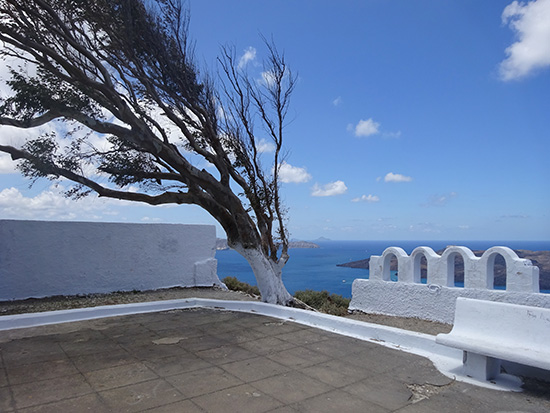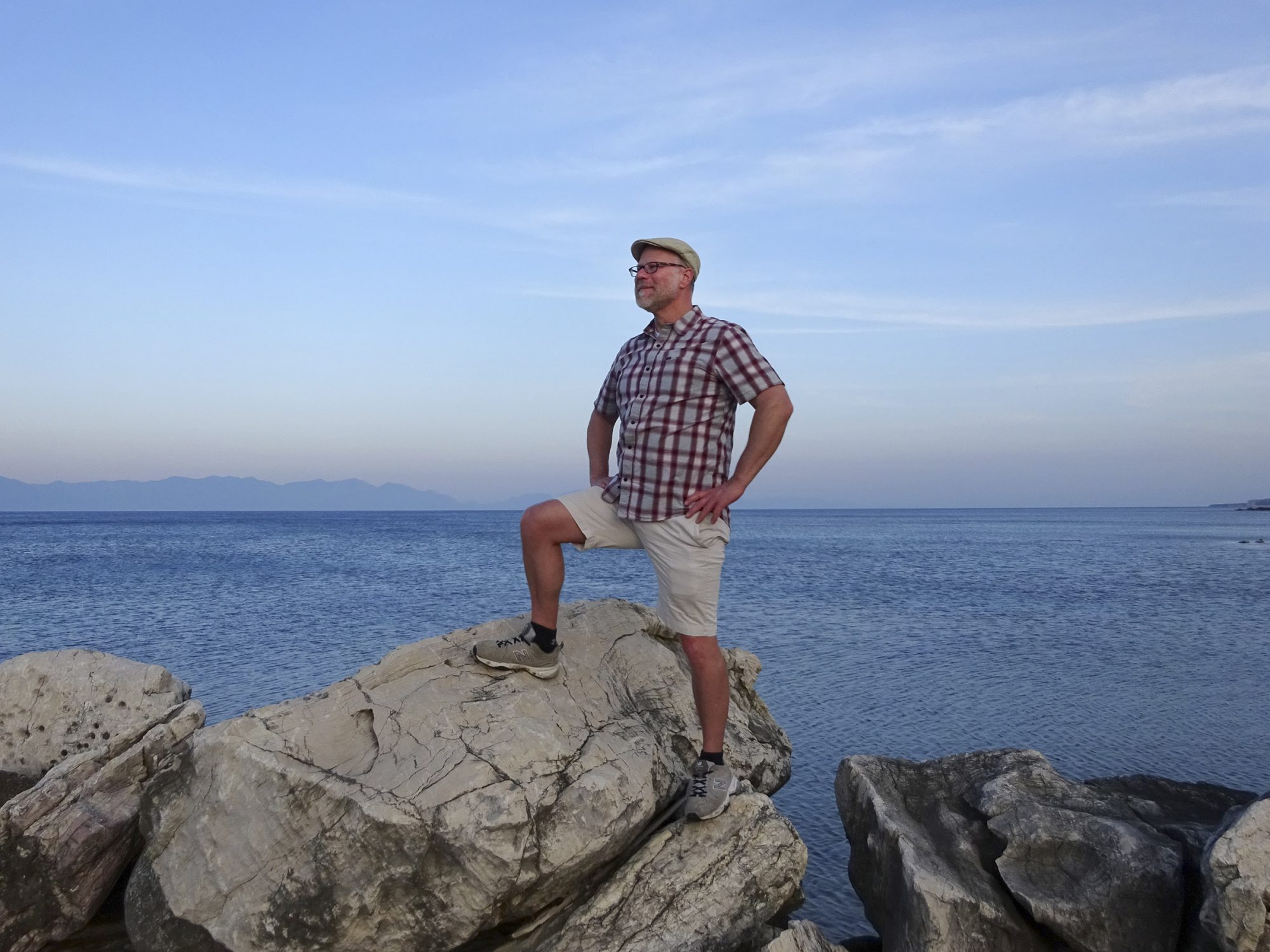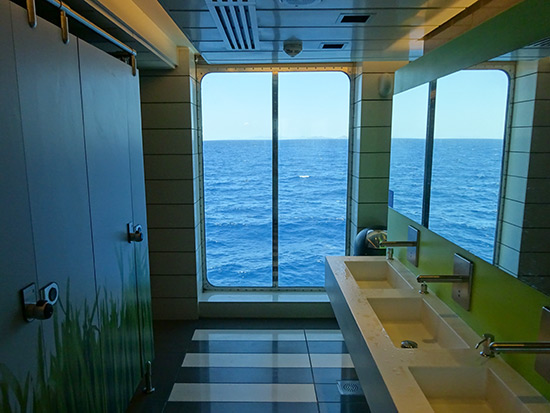
The Blue Star ferry to Paros has the most scenic mensroom anywhere–a floor to ceiling window framing nothing but sea and sky, undulating waves of blue zipping by to the sound of splishing, splashing and flushing. Stavros and I decided to spend the night in Paros, on our way to Santorini, to split up the 8-hour ferry ride. Paros is where Parian marble is from, where Praxiteles got his marbles.
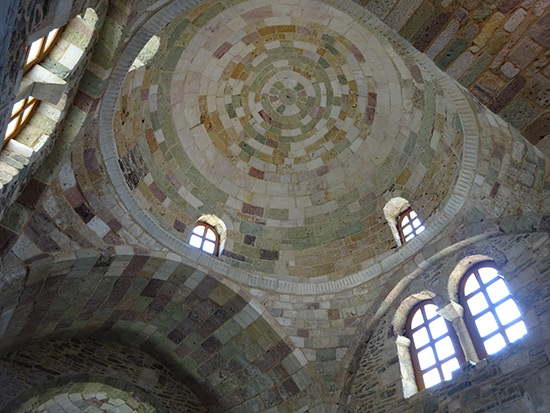
There’s a remarkable byzantine church there, founded by Constantine’s mom in the 4th century AD, Panagia Ekatontapyliani, which means “Church of 100 Doors.” I counted only a handful of doors, delighted by the conceptual conundrum of not only where these 100 supposed doors lead, but where they are in the first place.
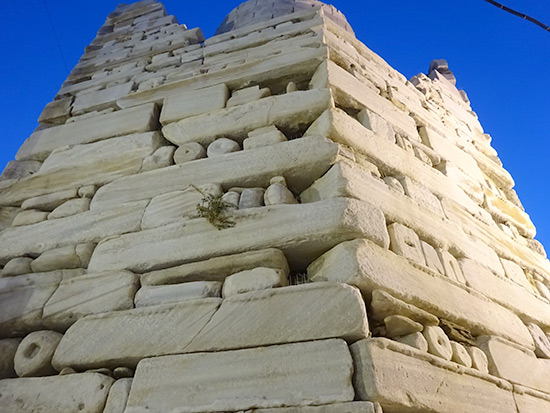
Up the hill from the church are the intriguing remains of a castle, built in 1260 by the Venetian Duke of Naxos. The castle was constructed using materials salvaged from the remains of nearby archaic and classical temples. The columns, stones and other architectural elements are stacked linearly, neatly, as if William Randolph Hearst were preparing to ship the temples back to the States for reassembly, a horrific and exhilarating assemblage of cultural and architectural obliteration.

Santorini is what remains after an enormous volcanic eruption about 3,600 years ago destroyed much of what was a single island, and created the current unbelievably scenic tourist destination: a central lagoon surrounded by 1,000 foot high cliffs on three sides. Entering the lagoon by ferry, you look up at these shimmery white towns perched on the top of the gray cliffs, spilling down like vanilla icing on a giant partially eaten bundt cake.
On the bus from the ferry landing to Thira, the main town, looking out the window you see what appear to be many low-growing shrubs, which are actually grape vines. The grape growers weave the vines into circular sort of baskets, very low to the ground, so that the grapes grow on the insides of the baskets, protecting them from the harsh wind and heat. After about 75 years, the vines are cut to the roots, and new vines grafted on. Some of the roots are centuries old, very helpful in an environment that offers little moisture retention.

We explored Akrotiri, a Minoan Bronze Age settlement that was buried under the volcanic ash of the big eruption that I mentioned. Only 10% of the site has been excavated and archaeologists have already uncovered remains of multi-story buildings and frescoes, incredibly preserved. You can see some pottery at the site, but the major finds are nearby in the Museum of Prehistoric Thira, including the delightful Blue Monkeys fresco.
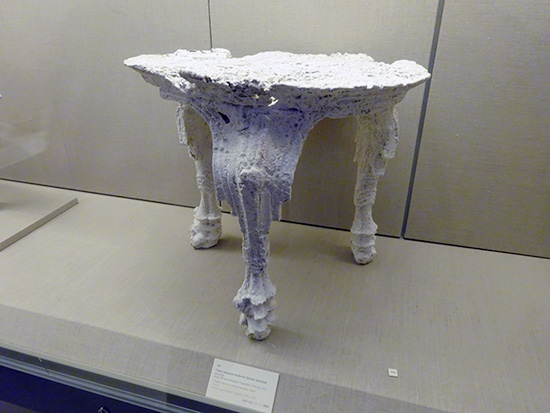
As at Pompeii, plaster has been poured into empty spaces in the ash, revealing the forms of buried objects that deteriorated and disappeared centuries ago. One cabriole-legged table, in particular, anticipated the Queen Anne leg by some 33 centuries.
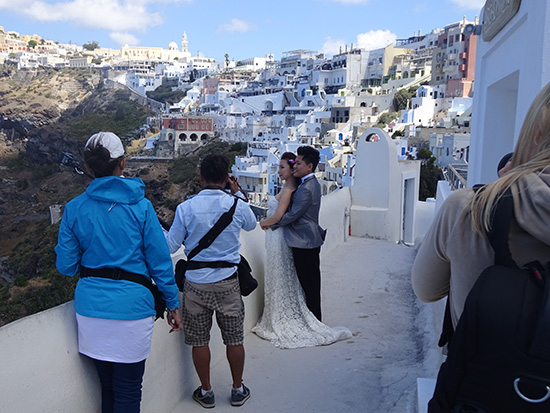
Everywhere on the island are Asian brides and their photographic entourages, zipping gleefully from one photogenic spot to the next with their white gowns and grooms. At night music pulsed, drunk guys peed in dark corners, aggressive touts beckoned us into their restaurants, stray cats screeched… but as we spilled down the hill, one block towards the caldera, all was silent, no one in sight, just moonlight illuminating the simple curves and angles of Cycladic buildings, churches, and terraces.
We took the express catamaran ferry back to Piraeus. It was supposed to have cut three hours off the trip, but our departure was delayed by two hours and the trip took an hour longer than scheduled. The ferry is about 1/8 the size of the majestic Blue Star ferry that brought us to Santorini, everyone crammed into airplane-like sardine can seating. It was a crazy bumpy ride, like being in the space shuttle. I got up to pee and was tossed back and forth in the aisles, and, imagining the scene I’d confront in the bathroom, bounced back into my seat. When we arrived in Piraeus, there was the Blue Star Ferry from Santorini, everyone disembarked hours before. I looked up at the window into that beautiful mensroom and made a beeline for the nearest dark corner.
Next stop, Rhodes… Stay tuned!
